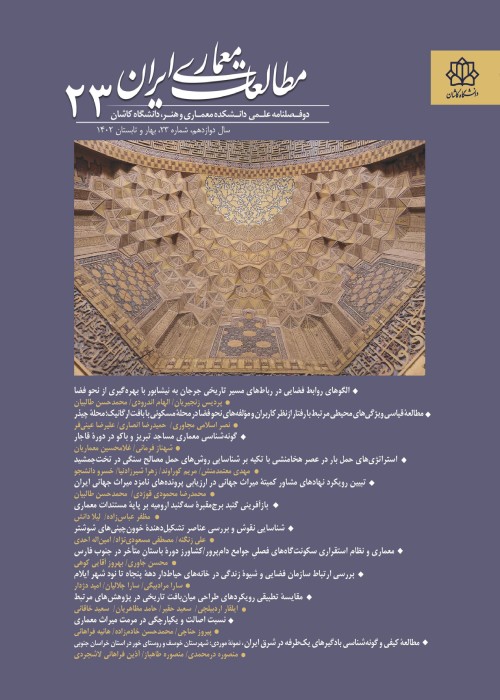Social Quality Evaluation of Open and SemiOpen Circulation Routes at the University Campuses, Case Study: Campus of the University of Kashan
Author(s):
Abstract:
During the past years, many educational centers have been created in our country without regard for the needs of users and learners in the built/open spaces. Due to the growing trend of students enrolling and warm weather conditions in Kashan which has negative impacts on the level of interaction, this study aims to evaluate social quality in the University of Kashan in terms of criteria such as sociability, walkability, flexibility, vitality, legibility, safety, and sensory richness. The evaluation criteria were drawn from the views of urbanists, which were then tested through questionnaires and field data and rated by the Likert scale. Finally, they were assigned weights using the Analytic Hierarchy Process (AHP) method. The outcome of the evaluation shows intermediate values for all criteria in the university campus. Sociability, walkability, flexibility, vitality, legibility and safety criteria rates fall in the medium range, while sensory richness rate falls in the poor range. For instance, some major weaknesses seen under sociability are low-quality furniture and inappropriate combinations of land use; under walkability, inappropriate furniture and paving; under flexibility, incompatible interior and exterior activities and poor-quality spaces in hangouts; under vitality, poor quality of green and public spaces and inefficient transport system; under legibility, insufficient installed signage; under safety, nighttime problems and interfering vehicular and pedestrian routes; and finally, low quality under sensory richness. However, some factors such as safety at daytime, campus lighting system and quantity of green spaces are accounted as strengths in the campus. Public spaces, largely ignored in the Development Plan of the University, are in need of flexible designs. So, in addition to paying particular attention to measures with low values, emphasis should be made on improving places that have the potential of becoming successful public spaces, on re-organization of circulation routes, on re-design of bicycle paths, and etc.
Keywords:
Language:
Persian
Published:
Journal of Iranian Architecture Studies, Volume:5 Issue: 10, 2017
Pages:
183 to 206
magiran.com/p1666054
دانلود و مطالعه متن این مقاله با یکی از روشهای زیر امکان پذیر است:
اشتراک شخصی
با عضویت و پرداخت آنلاین حق اشتراک یکساله به مبلغ 1,390,000ريال میتوانید 70 عنوان مطلب دانلود کنید!
اشتراک سازمانی
به کتابخانه دانشگاه یا محل کار خود پیشنهاد کنید تا اشتراک سازمانی این پایگاه را برای دسترسی نامحدود همه کاربران به متن مطالب تهیه نمایند!
توجه!
- حق عضویت دریافتی صرف حمایت از نشریات عضو و نگهداری، تکمیل و توسعه مگیران میشود.
- پرداخت حق اشتراک و دانلود مقالات اجازه بازنشر آن در سایر رسانههای چاپی و دیجیتال را به کاربر نمیدهد.
In order to view content subscription is required
Personal subscription
Subscribe magiran.com for 70 € euros via PayPal and download 70 articles during a year.
Organization subscription
Please contact us to subscribe your university or library for unlimited access!


